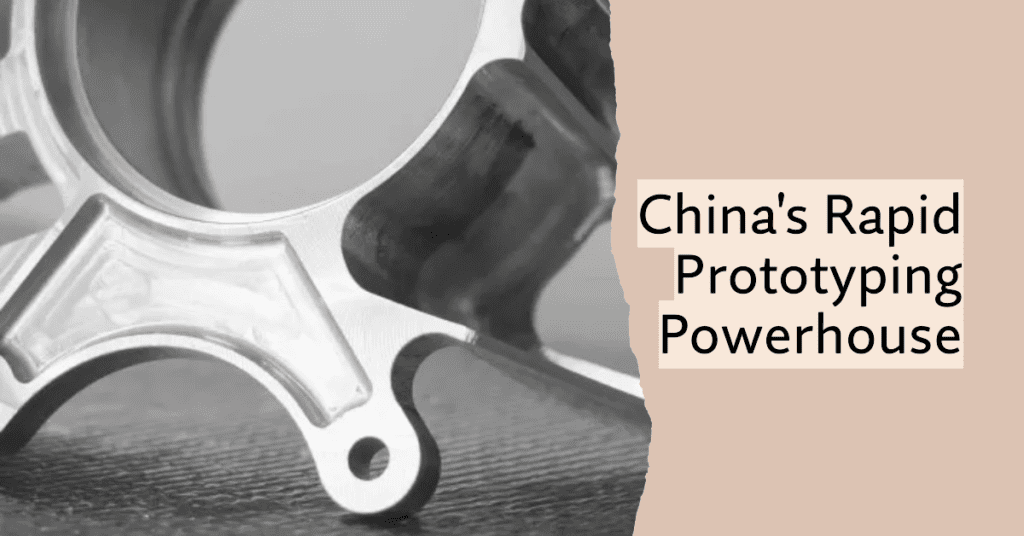
Rapid prototyping lets companies quickly validate their product designs before initiating large-scale production. Among the countries excelling in this domain, China stands out prominently. With its vast technical knowledge, efficient processes, and cost-effective solutions, China’s prototype manufacturing sector has witnessed exponential growth, making it a magnet for businesses around the globe.
This article explores China’s expertise in prototype manufacturing, including its benefits, challenges, and key techniques, making it a dominant player in the industry.
The Backbone of China’s Prototyping Industry
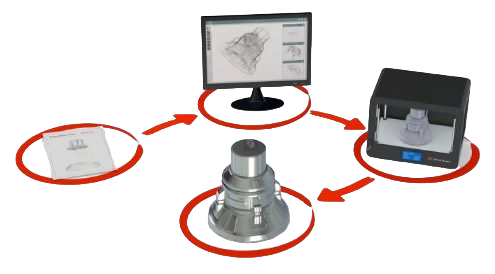
The Prototyping approach
China’s emergence as a dominant player in the prototyping industry results from sheer volume and a blend of factors and strategic developments. Several elements contribute to its global prominence, from a skilled workforce to the establishment of state-of-the-art infrastructure.
Let’s delve deeper into the foundational pillars supporting China’s dominance in this arena.
Skilled Workforce: China’s Biggest Asset
No industry can thrive without a skilled and knowledgeable workforce. China’s investment in education, training programs, and vocational schools over the past few decades has led to the cultivation of a large pool of professionals adept in the intricacies of prototyping. These engineers, technicians, and craftsmen are not just well-acquainted with traditional methods but continuously evolve with technological advancements, ensuring that China stays at the forefront of innovation.
Many cities in China, especially manufacturing hubs like Shenzhen and Guangzhou, have specialized training centers that produce thousands of skilled workers annually. These institutes focus on practical skills and teach students about the latest techniques, machinery, and quality standards.
Table: Other Factors Driving China’s Prototyping Industry
| Factor | Description |
|---|---|
| Collaboration with International Experts | China fuses its traditional manufacturing prowess with contemporary western practices by partnering with global specialists, enhancing local engineers’ expertise. |
| State-of-the-Art Infrastructure | China’s heavy investments in infrastructure have provided the industry with modern tools and a supportive environment. |
| Technological Prowess | Beyond mass production, Chinese factories boast advanced technologies, including high-precision CNC machines and innovative 3D printers. |
| Integrated Supply Chain | Proximity to suppliers for raw materials and machine parts facilitates a streamlined process, reducing costs and lead times. |
| Specialized Industrial Zones | China hosts dedicated zones for various industries, equipped with all necessary amenities, ensuring a seamless prototyping process from inception to delivery. |
Proximity to Raw Materials and Components
China’s geographical location and its abundant natural resources give it an edge. Having proximity to essential raw materials like metals, plastics, and electronics reduces the overhead costs and ensures a steady supply, minimizing potential disruptions.
Over the years, China has forged strong ties with countries rich in natural resources. These partnerships ensure a consistent flow of raw materials, even during global economic uncertainties. While China imports many raw materials, it also focuses on local extraction and processing, reducing dependency on external suppliers.
Government Policies and Support
The Chinese government recognizes the prototyping industry’s potential and has been proactive in its support. The government’s policies have been instrumental in driving growth, from tax breaks to subsidies for technological upgrades.
- Research and Development: China has steadily increased its R&D investments, ensuring the prototyping industry doesn’t stagnate. This focus on innovation ensures that Chinese manufacturers can cater to even the most complex requirements.
- Ease of Doing Business: Over the years, China has made significant strides in simplifying its bureaucratic processes, making it easier for manufacturers to set up and expand their operations.
Why Businesses are Turning to China for Prototyping?

Prototype of complex aerospace part
China’s emergence as a global hub for manufacturing is well known, but its rise as a leading destination for prototyping services is an intriguing development. This shift isn’t just a matter of cost-effectiveness but a combination of several factors that resonate with global businesses, from startups to multinational corporations. Let’s explore the myriad reasons that have cemented China’s position as the go-to destination for prototyping.
1. Speed of Production: From Idea to Reality in Record Time
In the fast-paced world of product development, time is of the essence. A swift transition from design to prototype can offer companies a significant competitive advantage.
- Efficient Workflows: Chinese prototyping firms have honed their workflows over the years, enabling quicker turnarounds without compromising on quality.
- Advanced Machinery: The incorporation of state-of-the-art machinery, from multi-axis CNC machines to next-gen 3D printers, facilitates rapid prototype creation.
- 24/7 Operations: Many Chinese firms operate around the clock, ensuring that projects are completed within stipulated timelines.
2. Access to a Diverse Range of Materials
Material versatility is a significant advantage for businesses when they choose China for their prototyping needs. The nation’s vast industrial breadth means a plethora of material options are available, catering to diverse project requirements.
A vast network of local suppliers ensures a steady supply of various materials, from metals and alloys to diverse plastic formulations. Cities like Yiwu and Shenzhen host specialized markets that offer a staggering variety of materials, catering to niche prototyping needs.
3. Cost-effective solutions without Compromising Quality
Undeniably, cost is a compelling factor that attracts businesses to China. However, it’s not just about cheaper rates but the value proposition that Chinese prototyping firms offer.
Chinese manufacturers use large-scale operations to offer competitive prices and maintain high quality through stringent quality control procedures. This dispels the outdated notion of “cheap Chinese goods.”
4. Integrated Services: More Than Just Prototyping
The Chinese prototyping industry offers more than just prototype creation. Many firms provide integrated services that cover the entire product development lifecycle. For businesses that need assistance refining their designs, Chinese firms can help optimize the design for manufacturing. Once the prototype is approved, businesses can easily transition to full-scale production, often with the same firm, ensuring consistency and quality.
5. Strong Intellectual Property Protections
While historically there have been concerns regarding intellectual property (IP) rights in China, the landscape has seen significant positive shifts in recent years.
- Improved Legal Framework: China has revamped its IP laws, providing stronger protection to foreign businesses.
- Dedicated IP Courts: The establishment of specialized courts to address IP disputes signifies China’s commitment to creating a secure environment for businesses.
6. Strategic Location and Global Connectivity
China’s strategic location and established logistics network make it a convenient base for global businesses. Ports like Shanghai and Shenzhen are among the busiest in the world, facilitating swift global shipments.
From roads to railways, China’s infrastructure ensures efficient movement of goods both within the country and internationally.
Key Prototyping Techniques in China
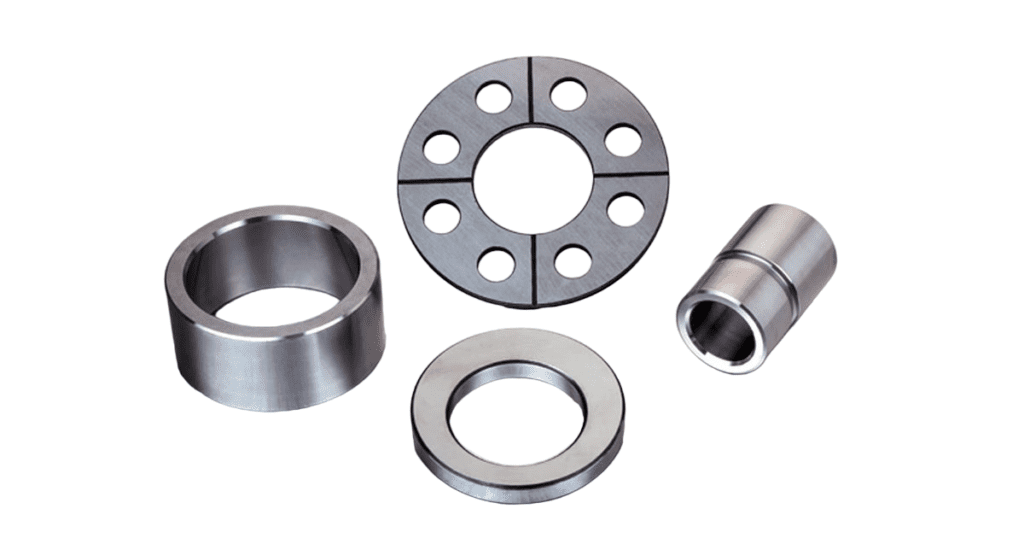
CNC machined prototypes for custom parts
The prominence of China in the prototyping landscape isn’t coincidental. It’s a blend of tradition, innovation, and vast industrial capabilities. As businesses globally lean towards China for their prototyping needs, it becomes imperative to understand the dominant techniques that the country excels in.
Table: Detailed Overview of Prototyping Techniques
| Technique | Description | Key Features | Key Benefits |
|---|---|---|---|
| CNC Machining | Uses Computer Numerical Control to carve prototypes from a solid block by interpreting 3D CAD data. | Versatility in material choice (metals, plastics, woods) & Precision in detail | High accuracy ensuring intricate details are captured |
| 3D Printing | Additive manufacturing process that builds a product layer by layer. | Rapid Turnaround, Expanding material range (from resin to metal) | Quick iterations; Suitable for complex designs |
| Vacuum Casting | Creates prototypes through a silicone mold from the master model. | Cost-Effectiveness for small batches & Detailing & texture reproduction | Economical for small batches; Captures intricate details |
| Rapid Tooling | Quickly creates molds for production processes like injection molding to test product performance. | Real-world Testing & Material Flexibility (thermoplastics, metals) | Accurate representation of final product’s look, feel, and function |
| Sheet Metal Prototyping | Involves processes like bending, punching, and laser cutting for products that require metal components. | Durability & Customization in shaping and forming | Strong prototypes suitable for rigorous testing |
| Reaction Injection Molding (RIM) | Uses high-pressure injection of a reactive mixture that solidifies upon chemical reaction in a mold. | Material Benefits (thermal & chemical resistance) and Suitable for large parts | Produces strong, flexible, and lightweight prototypes |
| SLA & SLS Techniques | Advanced 3D printing techniques where SLA uses a laser to solidify resin and SLS fuses powder particles. | SLA: Smooth finishes & SLS: Ideal for complex geometries | SLA provides smooth finishes; SLS can handle intricate shapes |
Try Prolean Now!
Process of Ordering Prototypes from China: What Are the Steps?
In today’s globalized economy, businesses worldwide capitalize on China’s robust prototyping industry. While the country offers competitive prices, advanced technology, and skilled labor, understanding the ordering process is crucial to ensure smooth transactions and high-quality outcomes.
Let’s delve deep into the step-by-step journey of ordering prototypes from China.
Table: Steps for Ordering Prototypes from China
| Step No. | Step Name | Description |
|---|---|---|
| 1 | Conducting Preliminary Research | Businesses should identify potential manufacturers, evaluate their reputations, and review their portfolios. Being well-informed aids in better decision-making. |
| 2 | Initial Contact and Communication | After shortlisting, businesses should contact each other via email, call, or business network. Communicate project specifics, desired materials, lead time, and budget for accurate quotes. |
| 3 | Sending Technical Specifications and Designs | Share detailed CAD designs and technical specifications of the prototype. Ensure files are in accepted formats and detailed. |
| 4 | Receiving and Evaluating Quotes | Manufacturers send quotes after reviewing the specifications. Businesses should evaluate these based on cost, expertise, proposed materials, and delivery time. |
| 5 | Requesting Samples | Before the final order, requesting sample prototypes provides insight into the manufacturer’s capabilities, even if it incurs additional costs. |
| 6 | Placing the Order | After approving the sample, businesses can finalize the order, often formalized with a contract or agreement. |
| 7 | Monitoring Production | Stay actively engaged after placing the order. Regular check-ins, progress photos, and site visits ensure the prototype development meets expectations. |
| 8 | Quality Assurance and Inspection | A thorough quality check of the prototypes is vital before shipping. Some businesses opt for third-party inspection services to ensure the prototypes adhere to standards. |
| 9 | Shipping and Customs | Manufacturers offer diverse shipping options. Companies should choose based on urgency and be knowledgeable about customs duties, regulations, and necessary certifications for a smooth transition across borders. |
| 10 | Post-Delivery Review | Upon receipt of a prototype, businesses should review its quality, ensure it matches the initial specifications, and offer feedback to the manufacturer. This will aid in refining any future collaborations. |
Embracing Sustainable Practices with Prototyping Manufacturing
Faced with global environmental concerns, China’s prototype manufacturing industry is increasingly emphasizing sustainability. Under international scrutiny and with local environmental considerations, rapid prototyping companies are transitioning towards eco-friendly practices.
- Material Selection: Manufacturers now favor sustainable materials with a reduced carbon footprint. Whether it’s biodegradable plastics or recycled metals, the emphasis is on minimizing environmental impact.
- Energy Efficiency: With advancements in technology, factories are optimizing energy consumption. Newer machinery consumes less power, and renewable energy sources, like solar and wind, are being integrated into operations.
- Waste Management: Efficient waste disposal and recycling systems are in place in many factories. Reducing wastage, reusing scraps, and recycling play pivotal roles in sustainability efforts.
- Sustainable Packaging: Prototype manufacturers are shifting away from non-biodegradable packaging materials. Recyclable or compostable packaging is favored, as it safeguards the environment and appeals to eco-conscious clients.
- Water Conservation: With water scarcity becoming a concern worldwide, factories in China are installing efficient water management systems, reducing usage and ensuring minimal wastage.
Who Can Take Advantage of China Prototype Manufacturing?
China’s prototype manufacturing capabilities have a broad appeal, catering to diverse industries and entities. Start-ups can exploit the cost-effective services offered by Chinese manufacturers, allowing them to iterate and refine their products rapidly. Large corporations can also benefit from China’s scalability, which will enable it to accommodate large orders easily.
Design studios can take advantage of China’s plethora of prototyping solutions, creating detailed mock-ups and models with precision. Academic institutions can also use China’s facilities for their diverse needs, as research projects and academic endeavors often require prototypes. Individual innovators can bring their ideas to life with China’s prototype manufacturing, turning a mere concept into a tangible model.
Overall, China’s prominence in the prototyping industry has made it a go-to destination for businesses around the globe, regardless of their size or industry.
Prolean’s Rapid Prototyping Services
Prolean stands out in the crowded field of prototype manufacturing in China. Here’s a deep dive into what makes their services sought after:
Table: Features of Prolean’s rapid prototyping service
| Feature | Description |
|---|---|
| Advanced Machinery | Prolean boasts state-of-the-art machinery such as CNC machines and the latest 3D printers, catering to a multitude of prototyping needs. |
| Expert Team | Our strength lies in its seasoned engineers and designers. They guarantee prototypes that are accurate and performance-optimized. |
| Quality Assurance | Every prototype at Prolean is subject to intense testing and inspection, ensuring compliance with client specifications and industry benchmarks. |
| Diverse Material Options | We provide a plethora of material choices from metals to plastics. They assist clients in picking materials tailored to the prototype’s intended use and properties. |
| Global Clientele | With clients from around the world, our international standards are evident. Their efficient communication and punctuality make them a top choice |
Conclusion
China’s dominant position in the prototype manufacturing domain is a testament to its strategic foresight and unwavering commitment to industrial growth. Over the years, the nation has channeled significant resources into upgrading its manufacturing infrastructure, ensuring that it’s on par with, if not superior to, global standards. This commitment extends beyond mere infrastructure; it encompasses a holistic approach that values innovation, skill development, and modern technology.
Furthermore, the Chinese ethos of constant improvement and pursuit of excellence has made it a magnet for businesses worldwide. Companies, both big and small, are increasingly looking towards China not just for cost benefits, but for reliability and precision in prototyping solutions. The combination of advanced technological capabilities, a skilled workforce, and a robust supply chain infrastructure gives China a competitive edge. As the demand for sophisticated prototyping solutions surges, China, armed with its unique amalgamation of resources, continues to set the benchmark in this arena.
Read more: What is Sheet Metal Prototyping? Examples and Advantages
FAQs
Why is China a preferred destination for prototype manufacturing?
China offers a combination of cost-effective, high-quality, and swift prototyping services, making it attractive for businesses worldwide.
How does Prolean stand out among other prototyping services in China?
Prolean distinguishes itself with its state-of-the-art technology, skilled workforce, commitment to innovation, and a robust client-first approach.
Are there any concerns regarding intellectual property when prototyping in China?
While concerns exist, taking proactive steps, like signing non-disclosure agreements and working with reputed firms, can mitigate these risks.
What are the leading prototyping techniques employed in China?
3D printing, CNC machining, and vacuum casting are among the popular methods used.
How is China addressing environmental concerns in prototyping?
By adopting eco-friendly materials and energy-efficient processes, China is making strides towards sustainable prototyping.

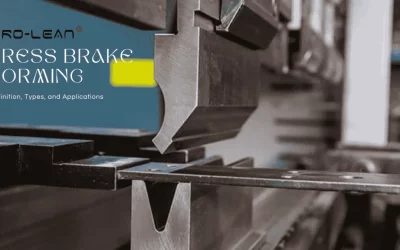
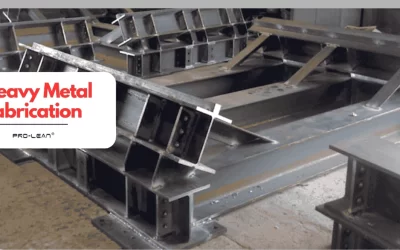
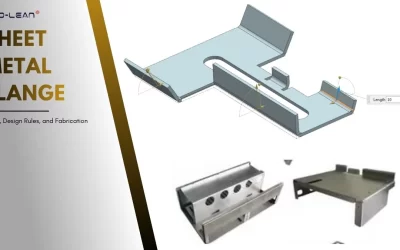
Hello,
I am an entrepreneur who runs a startup from Senegal.
I would like to speak to a representative of your company to have more information on the ordering procedures for manufacturing prototypes.
Do you have an agent who speaks French with whom I could be in contact?
Sincerely.
Thank you Hamady for reaching out to us. Yes, we provide prototyping services for diverse manufacturing projects! Our company representative will get back to you!